#variable geometry wings
Explore tagged Tumblr posts
Text
Sienar Fleet Systems/Cygnus Spaceworks Shuttlecraft and Gunships


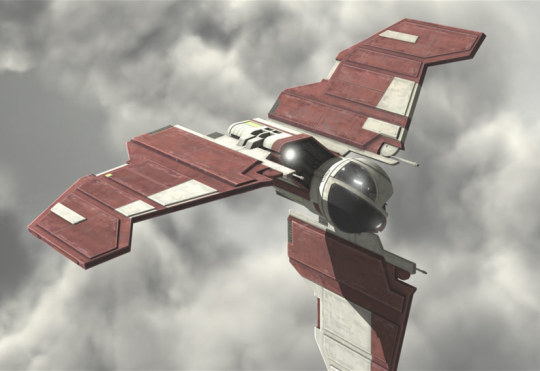
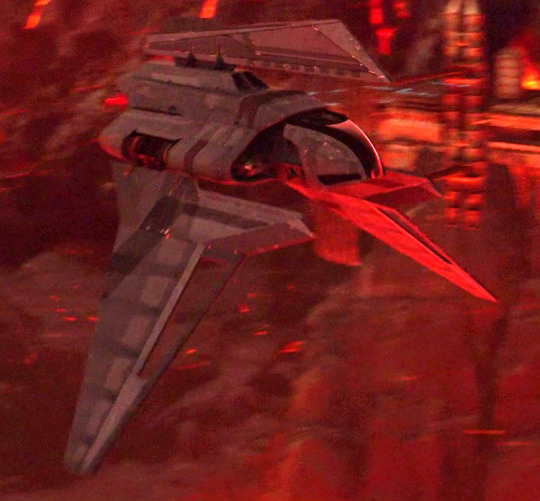


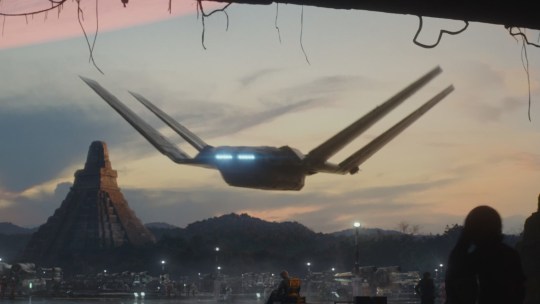
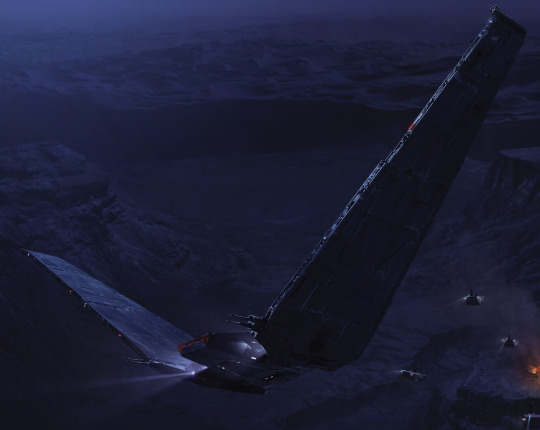

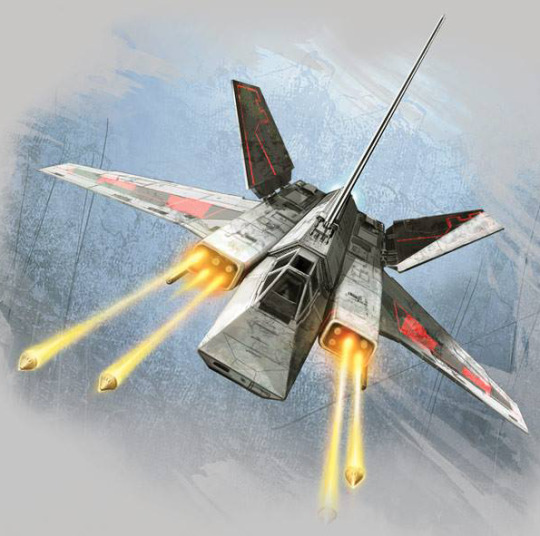
#star wars#space shuttle#shuttle#shuttlecraft#cargo plane#transport#passenger plane#variable geometry wings
3 notes
·
View notes
Text
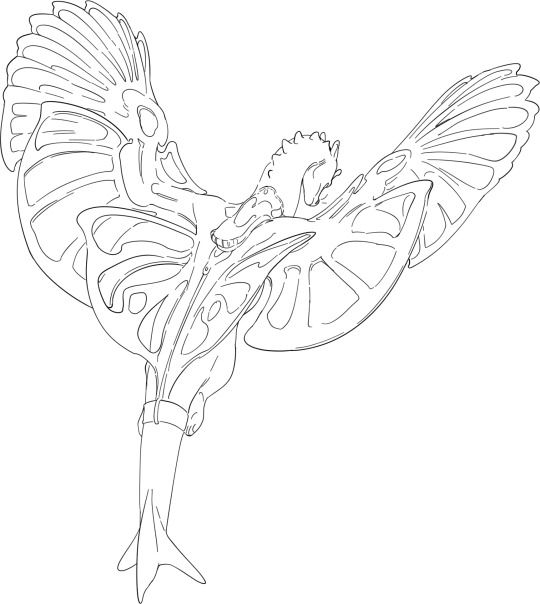
i wanted to post the green dragon lineart separately because i like the wings.. far from perfect but nice enough and a good look at the wingsails
all the sails have some degree of variable geometry (they can change shape by vascular contraction & expansion) but the propatagium/forward wingsail, the one in front of the elbow, is the most changeable, extending the leading edge to maintain lift at low airspeeds. similar to a bird's alula, this prevents stalling when coming in to land or when flying with a high angle of attack
#someone in the tags of the coloured pic was like oh cool u took flight dynamics into account. buddy u have no idea#dragonriders of pern#pern story
209 notes
·
View notes
Text

The Last Cat: The F-14 Tomcat and its Fleet Air Defense Role
The final member of the Grumman cat family, the F-14 Tomcat, with its signature variable-geometry wings and twin-engine design, became an iconic symbol of the Cold War.
Darrick Leiker
The Last Cat F-14 Tomcat
Creating the Cat
A product of the “Grumman Iron Works” (Grumman Corp.), famous for producing rugged fighter aircraft such as the F4F Wildcat and F6F Hellcat during World War Two, the F-14 is a variable-geometry twin-engine all-weather interceptor/air-superiority fighter built under the newer company name of Grumman Aerospace Corporation.
The final member of the Grumman cat family, the F-14 Tomcat, with its signature variable-geometry wings and twin-engine design, became an iconic symbol of the Cold War.Creating the CatThe Claws of the CatF-14 Specifications and VariantsCombat Air Patrol Cat FightsStray Cats
When a program known as TFX (Tactical Fighter Experimental), established by Defense Secretary Robert McNamara, produced a naval version of the highly-touted Air Force F-111A, it soon became obvious the aircraft was not going to live up to requirements or expectations as a replacement for the Navy’s McDonnell Douglas F-4. Soon after McNamara left office, the too heavy General Dynamics-Grumman F-111B naval version was forgotten.
In July 1968 the Navy requested proposals on a new carrier-based fleet defense aircraft under a program known as Naval Fighter Experimental (VFX). Designs came from General Dynamics, North American Rockwell, Ling-Temco-Vought (LTV), McDonnell Douglas, and Grumman. Grumman was announced the winner of the design competition in Jan. 1969 with the company’s Model 303 proposal.
Grumman’s Model 303 design was a two-seat design and was built around a weapons system known as the Hughes AWG-9. Two Pratt & Whitney TF-30 turbofans would power the large aircraft, and, following Grumman’s tradition of naming aircraft after cats, the new aircraft became known as the F-14 “Tomcat” and would be the last “cat” produced by Grumman, with the first flight taking place on Dec. 21, 1970.
The F-14 was the first of the Teen Series of fighters for the United States, and was designed to establish complete air superiority in the vicinity of carrier battle groups at sea, perform interceptor duties, reconnaissance missions, as well as a secondary role attacking tactical targets. The variable-geometry wings adjusted automatically between 20 and 68 degrees, sweeping back for intercepting at high-speeds, and swung forward for lower speeds used for loitering and increased endurance during patrol duties. The rugged landing gear was designed to withstand carrier operations for the heaviest and largest U.S. fighter ever built for carrier operations.
After completing carrier trials in the summer of 1972, deliveries of the aircraft, now designated the F-14A, followed in Oct. of that year with the commissioning of the first two F-14 squadrons, VF-1 and VF-2. The F-14 would go to sea as an operational aircraft for the first time aboard the carrier USS Enterprise on Sept. 17, 1974.

A prototype F-14A during armament testing in 1973 with the wings swung forward. (Image credit: Wikimedia Commons)
The Claws of the Cat
The heart of the F-14’s ability to perform its fleet defense missions was the Hughes AN/AWG-9 weapons control system, which could track up to 24 targets at once and allow 6 of them to be fired upon simultaneously. With roots in the Douglas F6D Missileer and the F-111B, the system and its powerful radar had look-down capabilities exceeding 150 miles and, combined with the AIM-54 Phoenix air-to-air (AAM) missile, the Tomcat was the perfect weapon for interception of long-range threats to naval assets.
The AIM-54 could carry a 132 lb warhead at speeds up to Mach 5 at a range over 125 miles, providing air defense of the fleet over an area consisting of 12,000 square miles at altitudes from near sea level to altitudes attained by aircraft and tactical missiles. An incredibly expensive missile, it was also very effective, carrying its own radar guidance system, allowing the F-14 to concentrate on and engage multiple threats. The AIM-54 was a large missile with a length of 13 ft, wingspan of 3 ft and weighing close to 1,000 lb. The F-14 could carry up to six Phoenix missiles, but normally was loaded in smaller quantities of two or four with a combination of other AAMs.
Medium range AIM-7 Sparrow missiles could also be carried by the Tomcat for BVR (Beyond Visual Range) aerial targets, as well as shorter range AIM-9 Sidewinder for closer targets. Racks allowed various combinations of “iron bombs” to be attached to the aircraft. Multiple weapons loading schemes allowed the F-14 to be configured for a variety of roles defending the fleet against aerial threats at various ranges or attacking ground targets, with a capacity for a mixture of ordinance of up to 14,500 lb. Drop tanks could also be thrown into the mix to extend range.
For close-in engagements the Tomcat also had a General Electric M61A-1 Vulcan 20 mm rotary cannon mounted in the forward fuselage on the left side. A total of 675 rounds were available for the Gatling-style gun capable of a rate of fire of up to 6,000 rounds per minute with a muzzle velocity around 3,400 feet per second (FPS).

An F-14 with a full load of six AIM-54 Phoenix missiles makes a turn with its wings in the swept position. While an effective long-range fleet defense weapon, it was unusual for the maximum number of AIM-54s to be carried, usually two or four were carried, augmented by AIM-7 and AIM-9 missiles. Tests showed the Phoenix effective not just against enemy aircraft, but against some types of incoming missiles as well. (Image credit: Wikimedia Commons)
F-14 Specifications and Variants
Grumman F-14A models were supplied to the United States Navy totaling 478 in number. The A variant was powered by two Pratt & Whitney TF30-P-412A afterburning turbofans producing up to 20,900 lb of thrust each and giving the aircraft a maximum speed of Mach 2.34. Maximum wingspan was 64 ft 1.5 in and 38 ft 2.5 in at the maximum swept position. Service ceiling was 56,000 ft. Overall length was 62 ft with a height of 16 ft. Maximum take-off weight was 74,349 lb. A crew of two consisting of a pilot and a rear seat officer known as a RIO (Radar Intercept Officer), or sometimes called NFO (Naval Flying Officer), sat in tandem with good visibility.
An F-14B model was proposed utilizing the Pratt & Whitney F401-PW turbofans with a prototype produced from an existing F-14A and known as the “Super Tomcat”, but was placed in storage after a handful of flights. It would be used later a testbed for the General Electric F110-GE-400 engines producing 28,200 lb of thrust with good results. Later, some F-14A models were fitted with General Electric F110-GE-400 engines, designated F-14A+ and eventually re-designated the F-14B in May 1991. The new engines were more fuel efficient and also increased performance. These Tomcats received the ALR-67 Radar Homing and Warning (RHAW) system along with other upgrades.
An F-14C variant was proposed powered by two General Electric F101DFE engines along with improvements in avionics, radar, and fire control systems. However, the C model was never produced and most of these improvements were incorporated into later production F-14As, F-14A+(B), and eventually the F-14D.
The final Tomcat variant was the F-14D, with a total of 37 being produced before further production being stopped by Defense Secretary Dick Cheney in 1989. An additional 18 F-14As were converted to the F-14D.
Notable upgrades to the F-14 throughout its service life include the TARPS (Tactical Airborne Reconnaissance Pod System) controlled by the RIO, which included an extra display for viewing reconnaissance data, allowing the Tomcat to assume the role of the retiring Vought RF-8G Crusader. The Low Altitude Navigation and Targeting Infrared for Night (LANTIRN) gave the F-14 a forward-looking infrared (FLIR) camera for nocturnal operations along with a laser target designator for guiding laser-guided munitions. Ground attack capabilities improved in the 1990’s with the addition of the Joint Direct Attack Munition (JDAM) system along with the capabilities to carry GPS guided weapons. ROVER III was added to some Tomcats to provide full motion video (FMV) real time to forward air controllers in the early 2000’s.

An F-14D of VF-31 “Tomcatters” during the type’s last operational cruise in support of Operation Iraqi Freedom in 2005/2006, armed with a GBU-12 Paveway II. (Image credit: U.S. Navy)
Combat Air Patrol Cat Fights
On August 19, 1981, two F-14s were engaged by Libyan Sukhoi Su-22 “Fitters” over the Gulf of Sidra in the Mediterranean Sea. In what became known as the Gulf of Sidra incident, the Tomcats from VF-41”Black Aces,” operating from the carrier USS Nimitz, were able to evade the hostile missile fired at them and returned fire splashing both Libyan aircraft.
The American aircraft were flying CAP (Combat Air Patrol) while a Lockheed S-3A Viking ran a pattern over international waters that were contested by Libyan leader Gaddafi as belonging to Libya. Both Su-22s were destroyed by hits in the tailpipe from heat-seeking AIM-9 Sidewinder missiles. It was the first aerial victories for the F-14 as well as a historical first of all aircraft involved being of variable-geometry designs.
Shortly after the incident two MiG-25 “Foxbat” aircraft operated by Libya headed towards Nimitz with F-14s turning them back, then once the F-14s turned for home, the MiGs turned back towards the carrier only to be chased away once more.
Jan. 4, 1989 saw the Libyans once again throw variable-geometry aircraft against American F-14s in a second incident over the Gulf of Sidra, when a pair of MiG-23 Floggers was downed in the Mediterranean Sea north of Tobruk, Libya. Two pairs of F-14s were conducting combat air patrols while operating from the carrier USS John F. Kennedy, when a Grumman E-2 Hawkeye detected the MiGs departure from an airfield near Tobruk and heading north toward the carrier battle group.
One pair of Tomcats operating with VF-32 was directed to intercept the MiGs while another pair of F-14s from VF-14 flew cover for Grumman A-6 Intruder aircraft operating in the area. The intercepting F-14s began tracking the Floggers 72 nautical miles away but, unlike most previous encounters with Libyan pilots, the two MiGs did not turn back once detecting the radar sweeps from the Tomcats.
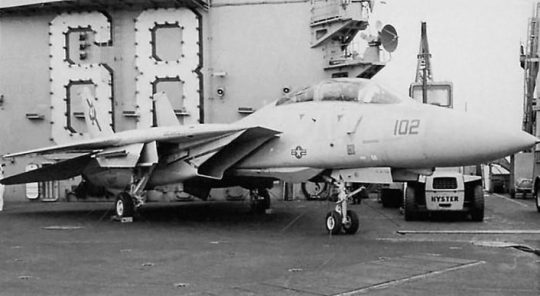
F-14A Tomcat 160403 on the deck of the USS Nimitz the day after the aircraft shot down a Libyan Su-22 Fitter. (Image credit: U.S. Navy)
The two pairs of aircraft continued to converge head on, and despite multiple maneuvers, the MiGs insisted on placing themselves on head-on approaches to the American aircraft. With the MiGs consistently showing aggression, they were determined hostile and one was shot down with an AIM-7 Sparrow, followed by the second MiG being downed by an AIM-9.
During Operation Desert Storm in 1991, Tomcats performed CAP duties over the Red Sea as well as the Persian Gulf, along with strike escort missions and reconnaissance roles. With strict Rules of Engagement, the F-14 was limited in utilizing BVR weapons such as the AIM-7 and the AIM-54; however the AWG-9 radar emissions frequently sent Iraqi aircraft retreating at a great range once they were “lit up.”
On Jan. 21, 1991 the F-14 suffered its only loss to enemy action when one was hit with an SA-2 surface-to-air missile near Al Asad airbase in Iraq. The F-14 shared the skies with Air Force McDonnell Douglas F-15s conducting air combat patrols. A Mi-8 helicopter would be the final kill for a United States Navy F-14 when it was downed with an AIM-9 on Feb. 6.
Nicknamed “Bombcats,” F-14s finished out their career utilizing enhanced ground attack capabilities in Bosnia during Operation Deliberate Force, in Operation Enduring Freedom in Afghanistan, and in Operation Iraqi Freedom. They performed these duties well and also helped enforce “no-fly zones.” However, the Tomcat’s career was coming to a close.
Stray Cats
Despite attempts to market the F-14 abroad, only one nation besides the United States purchased the F-14. Originally sold to the Imperial Iranian Air Force in the 1970s, the Shah of Iran was deposed from power leaving these potent aircraft and their Phoenix missiles in the hands of the Islamic Republic of Iran Air Force (IRIAF) in 1979.
Although not involved in fleet defense roles, Iran used the aircraft and the AIM-54 with good success during the Iran-Iraq War 1980-1989. Out of the original 79 purchased, small numbers of Iranian F-14s are thought to still be airworthy despite the lack of spare parts due to American sanctions, and at the time of this writing it is unclear how they have fared in the recent conflict with Israel.

An Islamic Republic of Iran Air Force F-14 on landing approach. Sold to at the time America’s ally, the revolution of 1979 removed the Shah from power and placed the aircraft in the hands of those hostile to the United States. (Image credit: Wikimedia Commons)
Putting the Cat out
Despite performing well and having extremely potent and effective weapons and capabilities for fleet air defense, the F-14 Tomcat was retired from active service with the Navy on Sept. 22, 2006 at NAS (Naval Air Station) Oceana, Virginia, after Grumman had produced a total of 710 aircraft. The potent AIM-54 Phoenix missile was retired previously in 2004. The last flight for an F-14 in U.S. service was on Oct. 4, 2006.
The Tomcat had become very expensive to maintain and being a mostly analog plane in a digital world, it was replaced by the Boeing F/A-18E/F Super Hornet that is capable of carrying the new AIM-174 “Gunslinger” long range AAM. Many F-14s are now on display in museums and parks with engines and critical components removed in order to prevent parts being harvested and used by the Iranians to keep their F-14s in service. Made famous by the popular 1986 Top Gun movie, the legendary Tomcat is well recognized and loved by both movie goers and aviation enthusiasts everywhere.
@TheAviationist.com
Several retired Tomcats are on display in museums and parks, the example here on display at Eisenhower Park in WaKeeney, Kansas just off of I-70. F-14A 160925 was a TARPS capable aircraft. (Image credit: Author’s Collection)
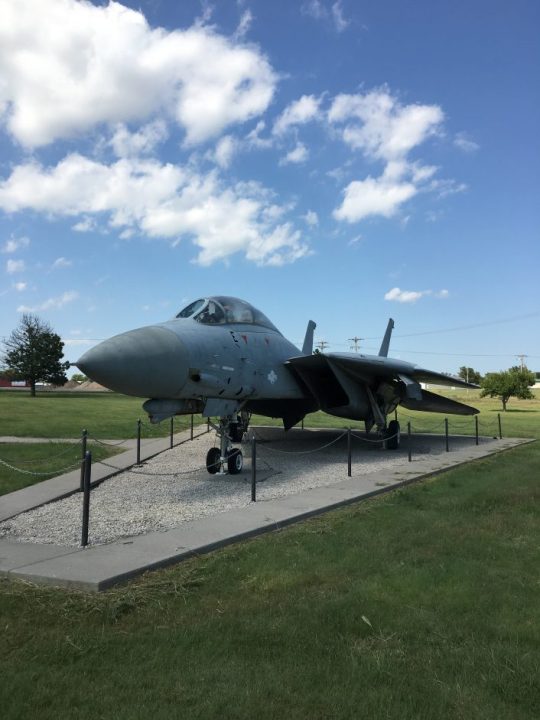
25 notes
·
View notes
Text

The Grumman X-29 Experimental Aircraft

The Grumman X-29 was an experimental aircraft developed by the United States in the 1980s, aimed at testing advanced aviation technologies. One of its most unique features was its forward-swept wings, which improved maneuverability and reduced drag. However, this design introduced significant aerodynamic challenges, such as the tendency of the wings to twist under stress. To address this, the X-29 utilized advanced composite materials, which provided the necessary strength without adding excess weight.

The X-29 was inherently unstable due to its forward-swept wings, necessitating a sophisticated digital fly-by-wire control system. This system allowed a computer to continuously make adjustments to keep the aircraft stable during flight. Additionally, the aircraft featured canard control surfaces, located in front of the main wings, which enhanced control and maneuverability, particularly at high angles of attack.

Another key feature of the X-29 was its variable-geometry engine inlets, designed to optimize airflow into the engine across different flight conditions. This design allowed the aircraft to maintain efficiency at various speeds and altitudes. Together, these innovative design elements made the X-29 a complex and advanced aircraft for its time.

The X-29 first flew on December 14, 1984, under the management of NASA and the United States Air Force. Two X-29 aircraft were constructed, and they accumulated over 400 test flights. These tests focused on exploring the aircraft's unique aerodynamic and flight control characteristics, providing valuable data on how forward-swept wings performed under various conditions.

The primary objective of the X-29 program was to investigate technologies that could be used in future fighter aircraft, with a particular focus on improving maneuverability and control at high angles of attack. Although the X-29 was never intended to enter production, the insights gained from its development contributed to future advancements in aircraft design.

While the X-29 did not see operational service, its legacy is significant. The technologies it explored, including forward-swept wings, composite materials, and digital flight controls, paved the way for innovations in fighter aircraft. Today, the X-29 is remembered as an important milestone in the study of unconventional aircraft designs and aerodynamics.

An interesting and lesser-known fact about the Grumman X-29 is that, despite its radical design, the aircraft reused components from existing fighter jets to save on development costs. Specifically, the fuselage of the X-29 was derived from the Northrop F-5A Freedom Fighter, and its landing gear was taken from the General Dynamics F-16 Fighting Falcon. This blending of cutting-edge technology with proven components from earlier aircraft helped keep the project within a more manageable budget, demonstrating a creative approach to experimental aircraft design during that era.

#responsive thoughts#aircraft#flight#experimental aircraft#x-series#military#jet fighter#x-29#forward swept wing
121 notes
·
View notes
Video
youtube
2025 Chevrolet Corvette ZR1 - Full Tech Specs and Performance
The 2025 Chevrolet Corvette ZR1 marks a new benchmark in American supercar engineering, combining advanced aerodynamics, powertrain innovation, and motorsport-derived performance.
At its core is the LT7 engine, a 5.5-liter twin-turbocharged V8 with a flat-plane crankshaft. This engine produces 1,064 HPr at 7,000 rpm and 825 pound-feet of torque at 6,000 rpm, making it the most powerful V8 engine ever by GM.
The LT7 is a significant evolution of the naturally aspirated LT6 found in the Corvette Z06. Key changes include forged aluminum pistons, strengthened connecting rods, and twin 76 mm ball-bearing turbochargers integrated into the exhaust manifolds. The engine also features an anti-lag system that maintains boost pressure during throttle lift-off, ensuring immediate power delivery when re-engaged.
Power is delivered to the rear wheels via a dual-clutch 8-speed transmission that has been reinforced to handle the increased torque. Chevrolet estimates 0 to 60 mph in 2.3 seconds, with a top speed exceeding 215 mph. In private testing, the 2025 Corvette ZR1 has achieved verified runs over 230 mph, including a peak of 233.
Standard models of the 2025 Corvette ZR1 feature a front splitter, underbody strakes, and an active rear spoiler. With the available ZTK package, the ZR1 gains a large fixed rear wing, dive planes, and additional carbon-fiber components. Combined, these upgrades provide over 1,200 pounds of downforce.
Chassis tuning includes Magnetic Ride Control 4.0 and a track-optimized suspension geometry. The ZR1 is equipped with Michelin tires—20 inches at the front and 21 inches at the rear. Braking is handled by carbon-ceramic rotors, measuring 15.7 inches in front and 15.4 inches in the rear, with electronic brake boost providing consistent stopping power.
Cooling performance has been enhanced through several functional design elements. A center-mounted intercooler evacuates heat through a vented hood, while additional ducts in the front fascia and rear quarter panels direct airflow to critical systems. Roof and rear window have been optimized for thermal management.
2025 Chevrolet Corvette ZR1 – Technical Specifications
General Informations Model: 2025 Chevrolet Corvette ZR1 Body style: 2-door coupe, mid-engine layout Platform: GM Y2 (C8 architecture) Drive type: Rear-wheel drive Production location: Bowling Green, Kentucky, USA
Powertrain Engine code: LT7 Configuration: 5.5-liter V8, twin-turbocharged, dual overhead cam, flat-plane crankshaft Displacement: 5500 cc Induction: Twin 76 millimeter ball-bearing turbochargers integrated into exhaust manifolds Maximum horsepower: 1064 horsepower at 7000 rpm Maximum torque: 825 pound-feet at 6000 rpm Redline: 8000 rpm Fuel delivery: Direct injection Cooling system: Intercooler with hood vent, front and side intake ducts, roof-integrated airflow, and rear-quarter cooling channels Special features: Anti-lag system, forged aluminum pistons, reinforced connecting rods, dry sump oiling system
Transmission Type: 8-speed dual-clutch automatic Final drive: Strengthened limited-slip differential
Performance Estimates 0 to 60 miles per hour: 2.3 seconds Quarter mile: Estimated 9.5 seconds with ZTK package Top speed: Electronically confirmed runs over 230 mph, with a recorded maximum of 233 mph
Chassis and Suspension Front suspension: Short/long arm configuration with Magnetic Ride Control version 4.0 Rear suspension: Multilink setup with Magnetic Ride Control version 4.0 Braking system: Carbon-ceramic rotors, 15.7 inches front and 15.4 inches rear, with electronic brake boost Steering: Electric power steering with variable ratio
Wheels and Tires Front tires: 275/30 ZR20 Rear tires: 345/25 ZR21 Tire options: Michelin Pilot Sport 4S standard, Michelin Pilot Sport Cup 2 R optional with ZTK package Wheel sizes: 20 inches by 10 inches front, 21 inches by 13 inches rear Construction: Lightweight forged aluminum
Aerodynamics Standard aero: Front splitter, underbody strakes, active rear spoiler Optional ZTK package: Fixed carbon fiber rear wing, front dive planes, additional carbon fiber components Downforce: Exceeds 1200 pounds with ZTK configuration
Dimensions (estimated) Overall length: 182.3 inches Overall width: 79.7 inches Overall height: 48.6 inches Wheelbase: 107.2 inches Curb weight: 3750 to 3800 pounds depending on configuration
Interior and Technology Driver interface: Digital instrument cluster, performance data recorder Seating options: GT2 and Competition Sport seats Infotainment: Chevrolet Infotainment 3 Premium with 8" touchscreen Audio system: Bose sound system Driver aids: Launch control, performance traction management, customizable drive modes
Optional Packages ZTK Track Performance Package includes track-optimized suspension, Cup 2 R tires, and high downforce aerodynamic components Carbon Fiber Package: carbon trim elements on exterior and interior
MSRP Starting price above 185,000 US dollars
5 notes
·
View notes
Text
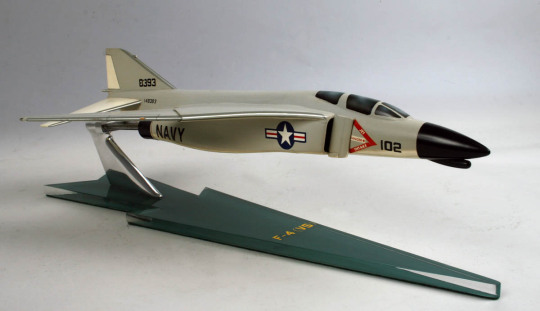
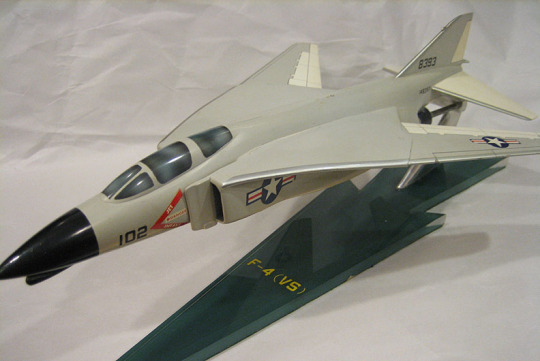
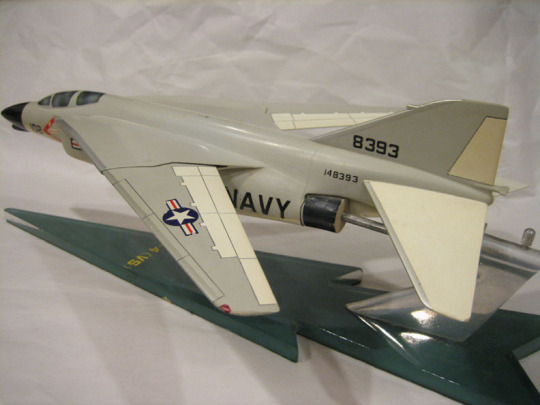
Model of a proposed version of the McDonnell Douglas F-4 Phantom II (FVS) with an airframe modified by Grumman to use variable geometry wings.
source
70 notes
·
View notes
Text
The UR-230 from URWERK - The “Eagle” has landed
The URWERK UR-200 family is taking off to new heights: with its dual variable-geometry turbine, double shock absorber and hybrid winding system, the UR-7.30 calibre unfurls the wings of URWERK’s mechanical possibilities. This UR-230 “Eagle” also features a physical transformation, including the development of a CTP carbon case fitted with a mobile cover, along with aerodynamic lines, a slimmer…

View On WordPress
3 notes
·
View notes
Text
Gundam in general has a fascination with aircraft, the XB-70 shows up verbatim as an old working example of it.
Moreover, the Concorde and XB-70’s dipping nose formed part of the inspiration for the transformable suits that appear starting in Zeta Gundam, the dipping nose being a feature of every plane form transformable mobile suit (the other inspirations being the variable geometry wing planes of the 70s and 80s).

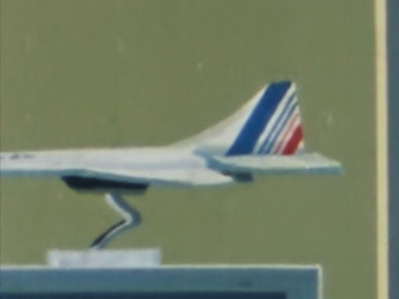
that is a concorde
that is specifically an air france concorde
france exists in gundam??
8K notes
·
View notes
Text
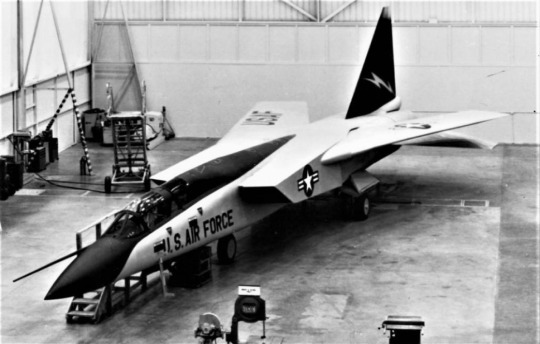
The Boeing 818 was a variable geometry (swing wing) mock-up, entered in the USAF 'TFX' programme in the 1960s. This was won by the General Dynamics F-111 and this rather 'handsome beast' went no further.
@Clarke_Aviation via X
29 notes
·
View notes
Photo

Rockwell B-1B
9 notes
·
View notes
Text
Pan Am Travel Posters
Boeing was awarded Government funding in 1966 for a Super Sonic Transport. 25 airlines placed orders for 125 aircraft. Able to cruise at Mach 2.7 at 60,000 ft. The aircraft was roughly the same size as a North American B-70 bomber or a 747. Boeing actually changed the design after the contract was awarded. The final design is pictured with the Pan Am logo, the initial design with the variable geometry wings is shown in the main drawing.

65 notes
·
View notes
Photo


In 1957, Barnes Wallis created a design for a variable-geometry wing supersonic bomber, the Vickers Swallow. Though the idea of supersonic bombers were replaced by ballistic missiles, the design was ahead of its time and the variable geometry would be used in other aircraft.

282 notes
·
View notes
Photo
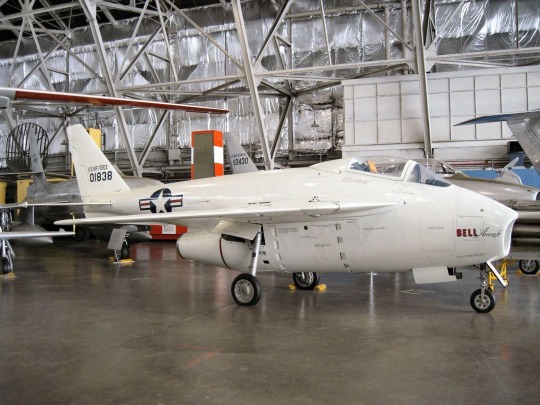




Bell X-5 research aircraft was built for the USAF to investigate variable-geometry wings. The design was based on the wartime Messerschmitt P.1101
22 notes
·
View notes
Note
Speaking of Macross and how they were inspired by F-14, kinda shame Japan itself didn't get the tomcat; it works on so many way, carrier capable twin engine interceptor with hightech missiles and variable geometry wings
McDonnell had a better marketing team, so they ended up with the equally great F-15, and time proved to them it was a good choice.
Still tho, one can always wonder…



37 notes
·
View notes
Photo
I really love the variable geometry wings.



Proposed F-4(FV)S Phantom II Swing-Wing Model
With the F-111B in a death spiral and the F-14 Tomcat but a glimmer in the future, McDonnell company offered an unsolicited solution, a variable geometry wing variant of the hugely successful F-4 Phantom II. An assessment of this proposal, given the provisional designation F-4 (FV)S, revealed that this it was lacking in several key areas, notably combat effectiveness: the AN / AWG-10 radar and AIM-7F missiles would be a significant downgrade from the desired AN /AWG-9/AIM-54 combination. Scorned by the Navy, McDonnell offered the aircraft to Britain as a cheaper alternative to the Anglo-French AFVG then under consideration. This aircraft would have been powered by the British Rolls-Royce RB-168-27R and given the designation F-4M (FVS).
via Hush-Kit
239 notes
·
View notes
Photo





Currently at Derek Eller Gallery in NYC is Alyson Shotz: Alloys of Moonlight. The exhibition highlights her unique work which becomes more intriguing the more time you spend looking at it.
From the press release-
Featuring a monumental polychromatic steel sculpture and luminescent three-dimensional aluminum wall works, Alloys of Moonlight delves further into questions that Shotz has been exploring throughout her nearly 30-year career: how do we grasp the mysterious forces that shape the universe, and how do we reconcile observable reality with the noumenal reality of environmental phenomena? This new body of work explores the dialectic between these axes, as Shotz refines a sculptural language to visualize the unseen and the sublime forces that frame the natural world. The works in Alloys of Moonlight act as instruments by which to measure and reflect the ineffable forces of nature.
In the center of the gallery is Aphelion, a looped steel sculpture that turns and twists in ways that seem to defy nature, leading the eye in an endless serpentine path around its undulating curves. The sculpture transforms as the viewer moves around the piece, its colors shifting from gold to green to blue. Changes in light and time of day are registered by the changing colors of Aphelion’s surface, a phantom quality mirrored in the spatial nature of the work. Made of the least amount of material to hold its shape, Aphelion constitutes a delicate synthesis between positive and negative space. It is as much composed of a mesh-like steel as the air that flows through it. The form, which is born of the artist’s longstanding interest in knots and non-orientable surfaces like the Mobius Strip, is similarly fugitive and beguiling. Comparable entangled structures serve a fundamental role in the quantum-mechanical foundations of nature itself, and knot-like forms likewise have appeared as cultural signifiers throughout art history in Roman, Byzantine, Chinese, African and Islamic art.
The walls of the gallery feature a series of crumpled aluminum sheets, painted in a hazy spectrum of light-reflective mineral colors. Rather than the two-dimensional geometry of a flat plane, these pieces are spatial objects that delineate the magnitude of a prior impact. Named Alloys of Moonlight after the title of the show, each piece has a particular form, a shape that quantifies the exact nature of an individual collision. Conversely, the folding also embeds the aluminum sheets with a degree of potential energy and the suggestion of an incomplete natural process: the unfurling of a leaf or the folding of a wing. As representations or diagrams, these works define form through a negative logic—rather than creating sculptural volume through physical material, thin walls of aluminum outline the shape of an interior void. Alloys of Moonlight subverts the expectation of concrete immutability, instead using space as a sculptural medium. This language of spatial ambiguity is paralleled by the striking luminescent surfaces of the works, which are similarly variable. Like the orbits of moons around planets, each piece is in constant flux, registering changes in sunlight as well as the shifting position of the viewer. The sculptures in this exhibition exemplify the interplay between what is visible, concrete, measurable, and a more ethereal subtext that structures the natural world. Alloys of Moonlight renews and deepens Shotz’s exploration of the delicate and sublime space between these realities.
This exhibition closes 3/18/23.
#alyson shotz#derek eller gallery#nyc art shows#sculpture#painting#sculptural painting#art#art shows
6 notes
·
View notes